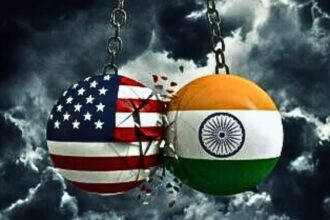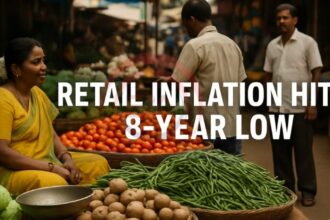India and Saudi Arabia are strengthening their business ties in the textile and apparel sector. A high-level Saudi delegation recently toured New Delhi to consider investment in India’s textile industry. This meeting is a significant step forward in enhancing trade between the two countries, with India already being a leading exporter of textiles to Saudi Arabia.
Current trade relationship
India has emerged as a prominent player in the textile industry of Saudi Arabia. India ranked as the second-largest exporter of textiles and clothing to Saudi Arabia in 2024, with exports at $517.5 million. This accounts for 11.2% of all imported textile and clothing products by Saudi Arabia. This robust trade relationship is an excellent platform for future investment and collaborations between the two nations.
The high-level meeting
On Tuesday, a Saudi delegation headed by Vice Minister of Industry and Mineral Resources Khalil in Salamah met with India’s Textiles Secretary Neelam Shami Rao in New Delhi. The meeting was aimed at finding avenues to expand bilateral cooperation in the textile industry. Both sides had keen interest in cooperating to develop production and market opportunities.
Ready made garments sector
The meeting highlighted significant opportunities for Saudi investment in India’s ready-made garments sector. Both countries discussed plans to increase production capacity and reach more markets through joint efforts in textile manufacturing and trade. This collaboration could help both nations benefit from each other’s strengths and resources.
One of the thrilling regions of future collaboration is man-made fibres and technical textiles. These new industries have the potential to be key pillars of trade between Saudi Arabia and India. The two nations have multiple opportunities for collaboration, such as a share of raw materials, technology exchange, and product innovation. Such cooperation could trigger growth and development in these niche textile sectors.
India’s investment schemes
PM MITRA parks
India introduced its flagship scheme PM MITRA, which is PM Mega Integrated Textile Region and Apparel Parks. The PM MITRA scheme seeks to develop large-scale manufacturing textile zones of modern infrastructure and facilities. The parks are to be developed for attracting local and foreign investors by offering everything to facilitate the efficient production of textiles under one roof.
Production Linked Incentive scheme
The second key announcement made was the Production Linked Incentive (PLI) Scheme for Technical Textiles and Man-Made Fibres. The scheme provides money to firms that raise production in these very particular textile segments. The PLI scheme is meant to enhance India’s manufacturing sector and establish India as a leading producer of modern textiles globally.
Saudi Arabia’s interest
The Saudi delegation was very interested in both of India’s schemes. They indicated a desire to synchronize these projects with Saudi Arabia’s industrial and investment plans. This suggests that Saudi Arabia believes there is genuine scope for investing in India’s textile industry and wishes to fold these opportunities into its overall economic plan.
Future prospects
The joint venture between Saudi Arabia and India in textiles has good prospects. The strong manufacturing sector of India, capable workforce, and support schemes by the government on one side, and Saudi Arabia’s investment strength and access to market on the other side, can provide both nations with reciprocal advantages. The alliance can result in the creation of jobs, transfer of technology, and higher volumes of trade.
The recent India-Saudi Arabia meeting is a significant milestone in textile trade cooperation. India’s ranking as the second-largest textile supplier to Saudi Arabia is evidence of the strong trade relationship that currently exists. The talk of investment potential in ready-made apparel, man-made fibres, and technical textiles, and India’s PM MITRA and PLI schemes all give a clear road map for future cooperation. With both nations striving to match industrial priorities, this alliance has the potential to bring substantial economic dividends and enhance bilateral relationships in the coming years.









